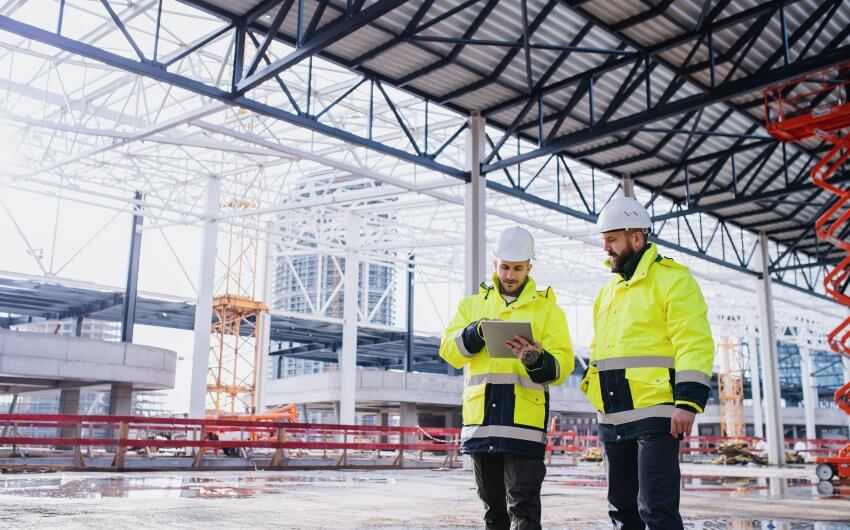Picture this – you’re looking at a digital, 3D cube hovering in the middle of your company’s conference room. You can grab any side of it, pull it outward, stretch it as far as you want, or twist it into a shape you’ve never seen before. It’s like handling modeling clay, holding its form no matter how you move it. You’re completely in control of its shape, with no boundaries to size or form.
This is the future of CAD modeling.
The age of virtual and augmented reality
Technology is evolving faster than we often realize. In less than ten years, we switched from having single-use, landline telephones in our homes, to people of all ages carrying cell phones that can access the internet, stream movies and TV, and can even create designs in CAD software. To say the least, tech industries are booming.
Virtual reality (VR) and augmented reality (AR) are among the emerging tech industries with the most exciting possibilities. If you haven’t yet stepped into the “worlds” of VR and AR, they essentially enable you to view fully explorable and immersive environments by simply putting on a headset. These environments can be fully-digital video games or even real-world locations on the other side of the planet.
Where VR, AR, and CAD meet
While the advent of VR and AR apps are opening new gateways for platforms like video games, social interactivity, and personal fitness, CAD software is also leveraging this technology to take 3D design to new limits. Industry leaders such as Dassault Systemés (SOLIDWORKS), Autodesk, and others are helping lead the way by partnering with VR and AR companies to bring CAD modeling to life.
SOLIDWORKS World 2017 featured a presentation from Meta, an AR technology company, showcasing their AR headset used in conjunction with SOLIDWORKS to create virtual, life-like models that are both interactive and highly functional. When wearing the Meta headset, you can grab a model from the virtual dashboard with your hands, move it out in front of you, rotate it, or even scale the size. All the movement is done by intuitively closing your hands on the model, moving it however you want, and then opening your hands to release it.
At SOLIDWORKS World 2018, Meta was featured again on the main stage at the General Session on Day 2 of the convention. Meta’s CEO Meron Gribetz demonstrated the capabilities of their headset alongside Suchit Jain, SOLIDWORKS’ Vice President of Strategy and Community. Gribetz put on the headset, pulled a full-scale roadster motorcycle from the dashboard, and dragged it out on stage. The motorcycle appeared right in front of Jain, as if he could hop on and ride away on the digital model. Gribetz moved over and positioned himself as if he was sitting on the bike with his arms fully extended, grabbing the handlebars. At that moment, I knew I had to try this for myself.
Later in the day, I checked out Meta’s booth at the Partner Pavilion to experience the AR headset. When I put it on, I could still easily see all my surroundings plus the floating digital dashboard where I could grab models with my hand and pull them out in front of me. I saw that an anatomical model of a beating heart and contracting lungs was in the library, so I grabbed it with one hand, pulled it out in front of me, and let go.
The model was fully animated, with the heart beating with life-like movement and the lungs expanding and contracting with all the intricate ventricle systems moving in sync. I immediately wanted to reach out and touch the heart, as if I was going to feel it beating in my hand. I marveled at how visually stunning the model was. I then rotated it a bit with my hands, moved my head forward to zoom in on the highly detailed ventricles, and even stood up and walked around it. This digital model was simply hovering in the middle of the expo hall floor, and I could manipulate it however I needed to capture the model in full visual 3D.
What does this mean for designers?
This marks the beginning for CAD designers being able to leverage hand-controlled modeling operations, which extend far beyond the traditional parametric tools to which engineers are accustomed. Creating organic, flowy geometry in CAD software often takes even the most advanced users hours upon hours to arrive at the final shape. This highly technical process may be able to done in a matter of minutes by simply putting on an AR headset, grabbing one of the faces of a model, and pulling it outward or twisting it into the desired shape. This “digital modeling clay” can give instant results to how the final product will look and feel, especially in the hands of the user. As a result, design processes will become much more artistic, and even fun.

As these technologies become more readily available, the question we must ask ourselves is, “What will be required of the designers of the future?” Not only will having a technical modeling background be of importance, but designers will be expected to create models faster, stronger, and with greater environmental sustainability. As other technologies, such as generative design (where 3D geometry is generated based on the demands placed on an existing model), become more prominently integrated in CAD modeling, product designs will become more creative, organic, and ergonomic.
The combination of these advanced design technologies will provide designers with more tools than they may know what to do with. Those who learn these skills and are able to showcase their abilities will stay ahead of the curve and make their mark on the design world!
Integrating AR and VR in your design career
Forging a successful career as an engineer or designer requires an ongoing learning process. Learning the skills to use new technology, like AR and VR, is vital to progressing to the top. While many of today’s CAD programs do a decent job of presenting models, imagine being a part of a team of engineers leveraging AR or VR to collaborate in real-time on highly-realistic 3D models, editing on the fly by simply grabbing a point or face, and manipulating it like Play-Doh. That’s some serious modeling power.
The key to this is gaining new knowledge and using it to your potential. Designs are only as great as the designers can make them. SolidProfessor wants to make great designers. With thousands of videos available in our Library, which are continually updated year-to-year, you can be sure to gain the skills you need to rise to the top. We couldn’t be more excited about where VR and AR will take CAD modeling, and we hope you’re along for the ride with us!
























